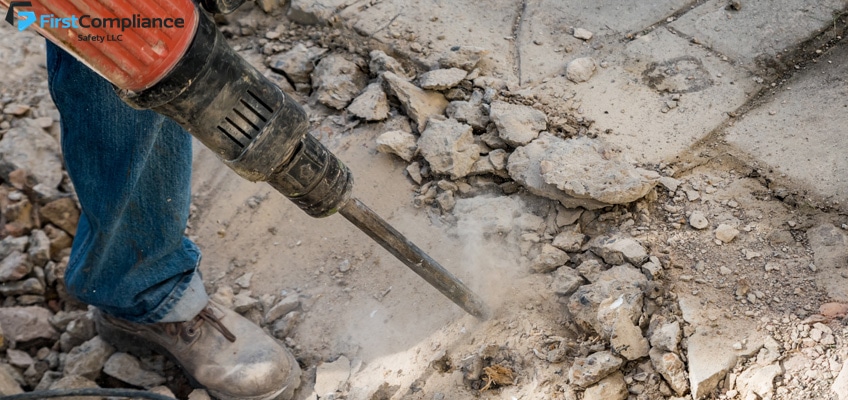
Looking for a PDF downloadable version for you to print off for your employees? We've got printable versions here for all of our Toolbox talks if you sign up for our newsletter!
Date: ____________________________________
Supervisor: ____________________________________
Company Name: ____________________________________
Job Name: ____________________________________
Every construction site is filled with sounds. These sounds come from tools, machinery, materials, and the environment. The sounds will vary depending on the setting and project, but nearly every contractor can identify the “normal” sounds of a worksite, given enough time and experience. With alert listening skills, your workers can learn to identify the signs of a hazard – whether this be the breakdown of an electrical tool, or an approaching thunderstorm.
When we teach about being alert for danger, we typically rely on our sense of sight. However, with focused awareness, sound can prove to be a wonderful sensory tool for spotting danger.
Guidelines for Discussion
If you are a contractor, you should be using all of your senses for monitoring the safety of your worksite. Today, we are focusing on the sense of sound. There are a series of normal sounds within a worksite that we all become accustomed to – these sounds provide a sense of normalcy and routine. The sounds of a worksite come from our tools, machinery, materials, and environment. If we notice when these sounds change from their normal patterns, we can locate the problem and make changes to prevent an accident or injury.
Next time you are at your worksite, pay careful attention to the sounds of the site.
Once you make a catalogue in your brain of all the normal sounds, you can better discern when something abnormal occurs. For instance, if you work with a relatively quiet electrical drill, you can tell that something is wrong if it suddenly begins loudly whirring or sputtering when in use. If you work in a social environment and are used to a steady flow of chatter from your supervisor, you could be alerted to a problem if the worksite is silent.
There are also things that will decrease your capacity to listen for safety:
Become acquainted with the normal operational sounds of your equipment and machines. Listen closely to the instructions of your supervisor, and take care of yourself so that you come to work with each sense operating at full capacity.
Additional Discussion Notes:
At the end of the discussion, go over your company’s radio/headphone policy with your employees. Are they allowed to listen to music on the job? Are they allowed to wear headphones or earbuds when working?
Attendees:
____________________________________
____________________________________
____________________________________
____________________________________
____________________________________
____________________________________
____________________________________
____________________________________
____________________________________
____________________________________
____________________________________
____________________________________
____________________________________
____________________________________
____________________________________
____________________________________
____________________________________
____________________________________
____________________________________
____________________________________
____________________________________
____________________________________
Disclaimer
The information contained within this document (both the online and downloadable version) is provided for informational purposes only. Nobody shall take this as a comprehensive or exhaustive resource on this topic. This material is believed to be accurate, however, the information has been compiled from multiple sources, and so First Compliance Safety assumes no responsibility for the accuracy of this information. We encourage you to consult experts about this specific Toolbox Talk to ensure you are compliant with any and all safety regulations and processes. In no event does the content of this document supersede any applicable local, state, or federal statutes or regulations.
Contact US
"*" indicates required fields
First Compliance Safety LLC is an independently-owned company. First Compliance Safety LLC is in no way endorsed, sponsored, approved by, or otherwise affiliated with Avetta®, NCMS®, ComplyWorks®, ISNetworld®, PICS®, CanQual®, Cognibox® & Veriforce®.
*ISN®, ISNetworld®, RAVS®, T-RAVS™ and MSQ™ are trademarks or registered trademarks of ISN Software Corporation.
First Compliance Safety LLC is an independently-owned company. First Compliance Safety LLC is in no way endorsed, sponsored, approved by, or otherwise affiliated with Avetta®, NCMS®, ComplyWorks®, ISNetworld®, PICS®, CanQual®, Cognibox® & Veriforce®.
*ISN®, ISNetworld®, RAVS®, T-RAVS™ and MSQ™ are trademarks or registered trademarks of ISN Software Corporation.
© Copyright 2024 First Compliance Safety LLC All Right Reserved